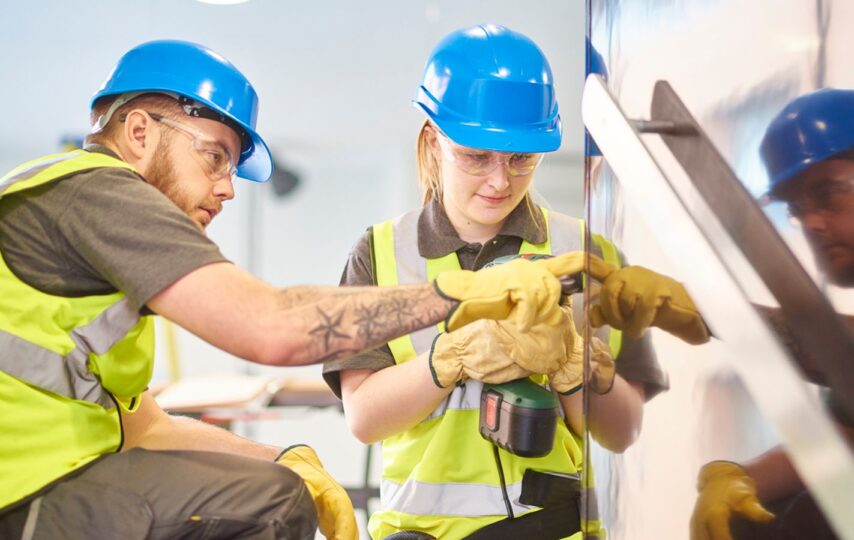The cornerstone to any successful enterprise is safety, regardless of whether the venture involves construction, production or software development. It is not only important to prevent accidents and harm, but also encourage a culture of responsibility and collaboration. The article explores the significance of recognizing safe behaviors in a project, methods for identifying these behaviors and ways to encourage and recognizing safe behaviors on a project.
The importance of Recognizing Safe Behaviours
It is important to recognize safe behavior for many reasons.
Preventing Incidents: By identifying and reinforcing safe behaviors, you can reduce the risk of injury, near misses, or injuries.
Building a safety culture: Recognizing safe practices encourages team members to put protection first. This leads to a culture where safety becomes a priority without compromise.
Regulations are strictly enforced in most industries. By recognizing and following these guidelines, you can avoid a criminal charge or any financial consequences.
Increased Morale: When employees are praised and valued, their safe behaviors can be identified. This leads to an increase in morale and productivity.
Identification of Safe Behaviours
You can identify safe behaviors through remarks, communication, and evaluation. These are a few key strategies:
Regularly observe workers: Supervisors and managers should regularly monitor their employees to ensure that safety protocol is being followed. It includes the right usage of Personal Protective Equipment (PPE), adhering to connected procedures and maintaining a clean and organized workspace.
Encourage your group members to engage in open communication. They can report any unsafe practices that they see from their friends. The open communication encourages an environment where safety is everyone’s concern.
Analyze data: Examine incident reviews, logs of close-to-misses and audits for protection to uncover styles of safe behavior. This data can provide insight into which practices work best to reduce dangers.
Create and use safety checklists that are tailored to each project. The checklists help to ensure all safety measures are always followed.
Safety Behaviors Examples
To recognize secure behavior, you need to know what it looks like in action. Examples encompass:
Worker’s use of equipment: They ensure that the gear is in the right place and they are handled carefully.
The employees are not reminded to wear the PPE required, such as helmets, goggles and gloves.
Follow Procedures: Participants in the team adhere to protocols installed for their duties. This includes proper lifting techniques and adhering lockout/tagout procedures.
Keep the work area clean and tidy to avoid tripping hazards.
Effective communication: Individuals in the team communicate frequently about possible dangers, and work together to resolve them.
Encourage and reward safe behaviors
It is important to reward and inspire safe behavior once it has been identified. This will ensure that the behaviours are repeated. These are some strategies for achieving this goal:
Reward Publicly: Recognize people or groups that exhibit secure behavior during meetings, or verbally through the organization.
Give tangible rewards: Provide incentives such as gift cards, extra time off work or safety-themed products to employees who consistently reveal safe practices.
Create safety programs: Set up applications such as “Safety employee of the month” or friendly competitions based on metrics.
Include Training and Education. Conduct regular classes to emphasize protection and correct behavior.
Create feedback loops. Encourage employees to provide their comments on safety practices, and to praise any hints or suggestions that lead towards improved safety.
Measure the impact of recognizing safe behaviors
It is vital to measure the impact of safe behaviors. The following metrics are important to consider:
Reduced Incidents: Monitor the number of injuries and accidents before and after you implement recognition tasks.
Engaging Employee: Evaluate employee engagement in safety discussions and willingness to participate.
Compare audit results over time to compare improvements made in terms of compliance.
Employee feedback surveys: Gather comments from employees about their beliefs regarding protection programs and employee recognition.
Problems and solutions
Although recognizing safe behavior is important, there are challenges that can occur, including:
Certains employees may resist new initiatives in safety. You can address this issue by simply communicating benefits to them and involving them in your technique.
Uneven Recognition: Failure to recognize all incidents of safe conduct can lead to demotivation. Make sure a fair and based reputation machine is nearby.
Balance Productivity and safety: Safety may not be considered when choosing assembly closure dates in high-stress situations. In order to ensure that safety and productivity are interconnected, it is important to emphasize this.
The conclusion of the article is:
It is important to recognize safe behaviors at work as a way of promoting a safer and more efficient working environment. Businesses can reduce risks and enforce policies by identifying, encouraging and rewarding safe behaviors. In the end, investing in a safety-reputation is a funding for success and well-being of any venture.







